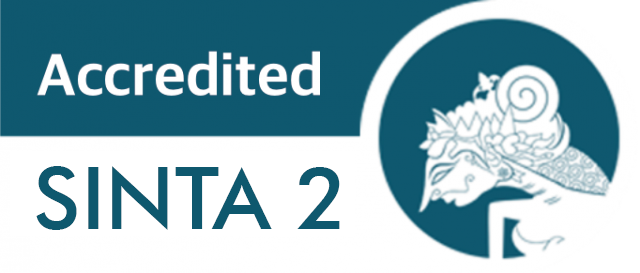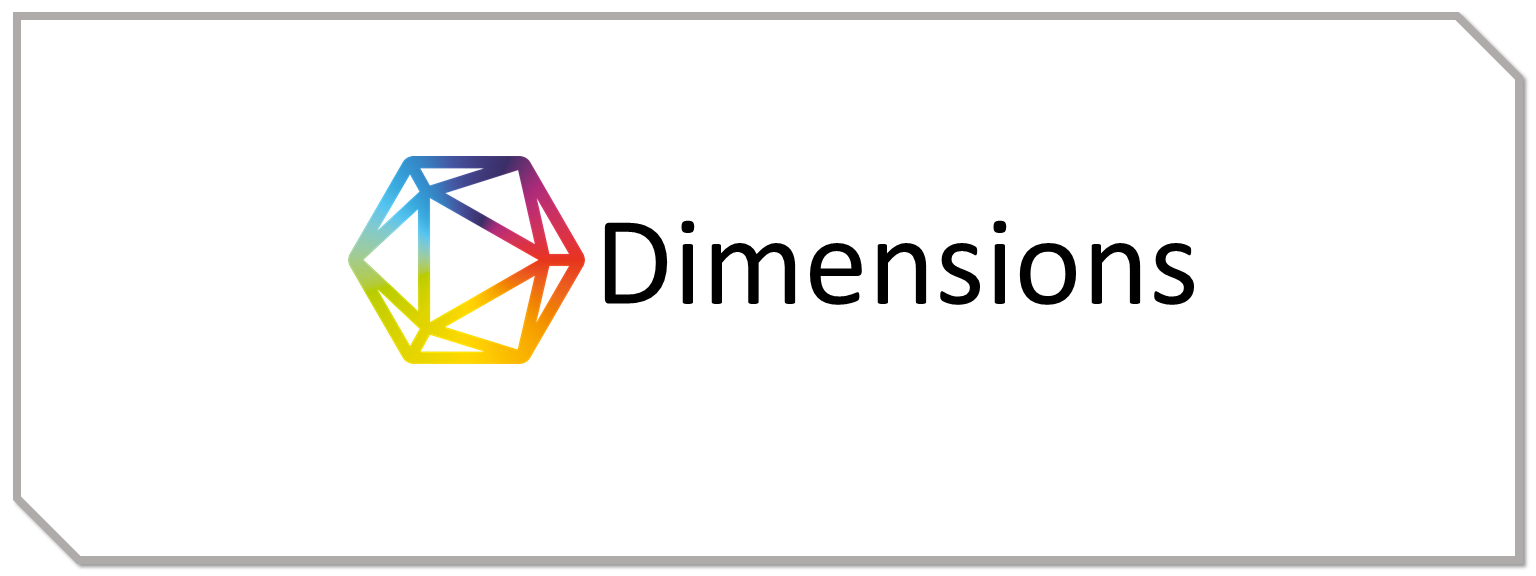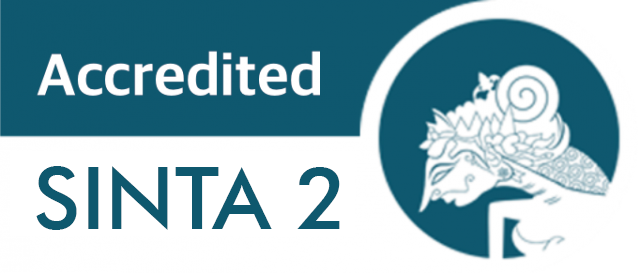Mental Health Status and Literacy of Adolescent in Rural Area of Mojokerto, East Java, Indonesia
Introduction: Adolescence is a crucial period for the development of mental health. Enhancing mental health literacy can reduce stigma and support early intervention and treatment. This study aims to examine the mental health status and mental health literacy among middle and late adolescents in a rural area of Mojokerto District, East Java, Indonesia. Methods: A total of 81 high school students from Mojokerto District participated in the study. The Depression Anxiety Stress Scale – Youth version (DASS-Y) was used to assess symptoms of depression, anxiety, and stress. Mental health literacy was measured using the Adolescent Mental Health Literacy Questionnaire (AMHL). The validity of the AMHL was tested on 30 students using Pearson correlation. Descriptive statistics were used to analyze the prevalence of mental health conditions and levels of mental health literacy. Inferential statistics were applied to explore associations between mental health status, literacy, and sociodemographic variables. Results: The results showed that 53% of students experienced symptoms of mental health problems. While most students demonstrated moderate to satisfactory mental health literacy, significant gaps remain. Enhancing literacy may help reduce stigma and improve knowledge and attitudes toward mental health. Sociodemographic factors and mental health literacy showed limited influence on mental health status. However, sex was significantly associated with both mental health literacy and mental health status (p = 0.016 and p = 0.032, respectively). Conclusion: Mental health during adolescence significantly influences adult well-being. Improving adolescent mental health literacy is crucial for early recognition, stigma reduction, and better access to mental health care.
Introductions
Adolescence, a stage defined by major physical, emotional, and social transitions, often presents challenges for mental health. The transition from childhood to adulthood, hormonal changes, increased independence, academic pressures, and the formation of new relationships might influence mental health problems in adolescents. The impact of these issues can be farreaching, affecting academic performance, social relationships, and overall well-being.
In 2019, UNICEF reported that 166 million adolescents experience mental health problems, including depression, anxiety, and stress[1]. While in 2022, a study in Indonesia showed that 15.5 million adolescents are having mental health problems[2]. A small study in Mojokerto district shows that 40% of orphan adolescents in one orphanage develop mental health problems, including depression, anxiety, and stress[3].
Several studies revealed that individuals with low literacy levels often struggle with understanding and processing information, leading to difficulties in making informed decisions and following instructions, including on mental health[4]. his can manifest in various behaviors, such as poor health choices, financial mismanagement, and limited engagement in community activities. Additionally, low literacy can hinder individuals' ability to seek and effectively utilize professional help, as they may have trouble navigating complex healthcare systems or communicating their needs to therapists or counselors[5][6]. Mental health literacy refers to the awareness, knowledge, and understanding of mental health conditions, their causes, and the available treatments. This literacy is crucial for supporting the healthy mental status of adolescents. By understanding the signs and symptoms of mental health conditions, recognizing the necessity of seeking help, and knowing how to access appropriate resources, young people can better manage their own mental well-being. Mental health literacy can empower individuals to make well-informed decisions about their mental health, reduce stigma associated with mental illness, and create a supportive environment for peers. By promoting mental health literacy, we can help adolescents develop the skills and knowledge necessary to lead healthy and fulfilling lives. With good mental health, people will be able to cope with stress, learn and work, and contribute to society[7].
The association between mental health and mental health literacy (MHL) has been extensively studied. A systematic review concluded that young individuals who had experienced moderate to severe levels of depression in the week leading up to the survey were more likely to have an insufficient level of MHL[8]. In Iran, a nationwide survey involving 20,571 adults, including 4597 youth, reports that inadequate health literacy is related to poor mental health status[9]. A similar finding is reported by a study of 700 Chinese adolescents[10]. The same conclusion is reported in 102 Indonesian undergraduate students[11]. These suggest that improving MHL can be an important part of promoting mental health, including in adolescents, as untreated mental health issues in adolescence can persist into adulthood, potentially leading to chronic mental health conditions and subsequent physical and mental health impairments[8].
However, it is necessary to note that the relationship between mental health and MHL is complex. Several sociodemographic factors were found to be associated with mental health literacy and mental health status. For example, socioeconomic status has been shown to affect mental health status and its literacy, with lower socioeconomic status associated with poor mental health and inadequate mental health literacy[10]. Older people and individuals with higher education typically exhibit better mental health status[9].
Since the data about Indonesian adolescents' mental health status and literacy are limited in Indonesia, this study would like to explore the mental health status and 'literacy in the rural area of Mojokerto, East Java, Indonesia. The relationship between two variables and sociodemographic factors was explored.
Methods
Study design and data collection
This cross-sectional study was performed in April-May 2024 using the self-administered Depression Anxiety Scale Youth version (DASS-Y)[12]and Adolescent Mental Health Literacy Questionnaire (AMHLQ)[13]. This was a preliminary study to measure mental health literacy and mental health status in adolescents in rural areas. The respondents of this pilot study were 81 adolescents, aged 15-18 years old, at one high school in the Mojokerto district. Schools were chosen for this study based on accessibility, considering both their location and the ease of obtaining necessary permits. Schools then selected first- and second-grade students to participate, taking care to minimize interruptions to their regular classes. The school principal and respondents themselves were informed about the survey, including anonymous publication, before receiving the questionnaire. Informed consent was given by the school principal, who is the guardian of the students. Respondents who did not fully complete the questionnaire or withdrew their consent were excluded from the study. Data were collected at one school in the Mojokerto district, which was conveniently accessible and gave permission to conduct the study. Prior to the survey, an explanation of the questions was given to the respondents before they filled them out independently.
Instruments
The Depression, Anxiety, and Stress Scale for Youth (DASS-Y) was used to measure mental health problems, including depression, anxiety, and stress. This 21-item questionnaire uses a Likert scale ranging from "not true" to "very true" (0-3), with a total possible score of 0 to 63[12]. Adolescent Mental Health Literacy (AMHL) consisted of 33 questions was used to measure literacy of adolescents about mental health, including erroneous beliefs/stereotypes (9 questions), knowledge of mental health problems (12 questions), first aid skills and help-seeking behavior (7 questions), and
UNICEF. “Ensuring mental health and well-being in an adolescent’s formative years can foster a better transition from childhood to adulthood.” UNICEF. https://data.unicef.org/topic/child-health/mental-health/ (accessed 16 May, 2023).
UGM, “Indonesia – National Adolescent Mental Health Survey (I-NAMHS),” Univesitas Gadjah Mada, Yogyakarta, 2022. Accessed: 16 May 2023. [Online]. Available: https://qcmhr.org/wp-content/uploads/2023/02/I-NAMHS-Report-Bahasa-Indonesia.pdf
A. d’Arqom et al., “Mental health and decision-making participation of adolescent orphans: A pilot study,” Jurnal Keperawatan Padjadjaran, vol. 11, no. 3, pp. 176-183, 2023, doi: https://doi.org/10.24198/jkp.v11i3.2358.
R. Shahid, M. Shoker, L. M. Chu, R. Frehlick, H. Ward, and P. Pahwa, “Impact of low health literacy on patients’ health outcomes: a multicenter cohort study,” BMC Health Services Research, vol. 22, no. 1, p. 1148, 2022/09/12 2022, doi: 10.1186/s12913-022-08527-9.
S. S. Coughlin, M. Vernon, C. Hatzigeorgiou, and V. George, “Health Literacy, Social Determinants of Health, and Disease Prevention and Control,” (in eng), J Environ Health Sci, vol. 6, no. 1, 2020.
P. Allen-Meares, B. Lowry, M. L. Estrella, and S. Mansuri, “Health Literacy Barriers in the Health Care System: Barriers and Opportunities for the Profession,” (in eng), Health Soc Work, vol. 45, no. 1, pp. 62-64, Jan 7 2020, doi: 10.1093/hsw/hlz034.
WHO. “Mental health.” World Health Organization. https://www.who.int/news-room/fact-sheets/detail/mental-health-strengthening-our-response (accessed 9 May, 2023).
S. Seedaket, N. Turnbull, T. Phajan, and A. Wanchai, “Improving mental health literacy in adolescents: systematic review of supporting intervention studies,” (in eng), Trop Med Int Health, vol. 25, no. 9, pp. 1055-1064, Sep 2020, doi: 10.1111/tmi.13449.
A. Haeri-Mehrizi et al., “Health literacy and mental health: a national cross-sectional inquiry,” Scientific Reports, vol. 14, no. 1, p. 13639, 2024/06/13 2024, doi: 10.1038/s41598-024-64656-7.
X. Zhang, H. Yue, X. Hao, X. Liu, and H. Bao, “Exploring the relationship between mental health literacy and psychological distress in adolescents: A moderated mediation model,” (in eng), Prev Med Rep, vol. 33, p. 102199, Jun 2023, doi: 10.1016/j.pmedr.2023.102199.
A. Mayangsari, R. D. Arnanda, F. A. Isnaini, and A. Iskandarsyah, “Health Literacy and Mental Health Status: Correlational Study of Undergraduate Students,” Jurnal Riset Aktual Psikologi, vol. 11, no. 2, 2020.
M. Szabo and P. F. Lovibond, “Development and Psychometric Properties of the DASS-Youth (DASS-Y): An Extension of the Depression Anxiety Stress Scales (DASS) to Adolescents and Children,” (in English), Frontiers in Psychology, Original Research vol. 13, 2022-April-14 2022, doi: 10.3389/fpsyg.2022.766890.
S. Zare, M. H. Kaveh, A. Ghanizadeh, M. Nazari, A. Asadollahi, and R. Zare, “Adolescent Mental Health Literacy Questionnaire: Investigating Psychometric Properties in Iranian Female Students,” (in eng), Biomed Res Int, vol. 2022, p. 7210221, 2022, doi: 10.1155/2022/7210221.
S. M. Hannan and T. T. Wells, “A Broad Examination of Mental Health Literacy Among College Students in the United States,” (in eng), Health Lit Res Pract, vol. 7, no. 4, pp. e207-e214, Oct 2023, doi: 10.3928/24748307-20231023-01.
Z. Niu, J. Willoughby, and R. Zhou, “Associations of Health Literacy, Social Media Use, and Self-Efficacy With Health Information-Seeking Intentions Among Social Media Users in China: Cross-sectional Survey,” (in eng), J Med Internet Res, vol. 23, no. 2, p. e19134, Feb 25 2021, doi: 10.2196/19134.
A. M. Khalaf, A. A. Alubied, A. M. Khalaf, and A. A. Rifaey, “The Impact of Social Media on the Mental Health of Adolescents and Young Adults: A Systematic Review,” (in eng), Cureus, vol. 15, no. 8, p. e42990, Aug 2023, doi: 10.7759/cureus.42990.
J. A. Singh, M. Siddiqi, P. Parameshwar, and V. Chandra-Mouli, “World Health Organization Guidance on Ethical Considerations in Planning and Reviewing Research Studies on Sexual and Reproductive Health in Adolescents,” (in eng), J Adolesc Health, vol. 64, no. 4, pp. 427-429, Apr 2019, doi: 10.1016/j.jadohealth.2019.01.008.
S. M. Sawyer, P. S. Azzopardi, D. Wickremarathne, and G. C. Patton, “The age of adolescence,” The Lancet Child & Adolescent Health, vol. 2, no. 3, pp. 223-228, 2018, doi: 10.1016/S2352-4642(18)30022-1.
E. P. Backes and R. J. Bonnie, Eds. The Promise of Adolescence: Realizing Opportunity for All Youth. Washington (DC): National Academies Press, 2019. [Online]. Available: https://www.ncbi.nlm.nih.gov/books/NBK545476/.
WHO, “Mental health of adolescents,” ed. Geneva: World Health Organization, 2021.
Y. Jiang, H. Xiao, and F. Yang, “Accompanying your children: Living without parents at different stages of pre-adulthood and individual physical and mental health in adulthood,” (in English), Frontiers in Public Health, Original Research vol. 11, 2023-March-13 2023, doi: 10.3389/fpubh.2023.992539.
R. Mansfield, P. Patalay, and N. Humphrey, “A systematic literature review of existing conceptualisation and measurement of mental health literacy in adolescent research: current challenges and inconsistencies,” (in eng), BMC Public Health, vol. 20, no. 1, p. 607, May 1 2020, doi: 10.1186/s12889-020-08734-1.
C. González-Sanguino, J. Rodríguez-Medina, J. Redondo-Pacheco, E. Betegón, L. Valdivieso-León, and M. J. Irurtia, “An exploratory cross-sectional study on Mental health literacy of Spanish adolescents,” (in eng), BMC Public Health, vol. 24, no. 1, p. 1469, May 31 2024, doi: 10.1186/s12889-024-18933-9.
H. Y. Lee, J. Hwang, J. G. Ball, J. Lee, Y. Yu, and D. L. Albright, “Mental Health Literacy Affects Mental Health Attitude: Is There a Gender Difference?,” (in eng), Am J Health Behav, vol. 44, no. 3, pp. 282-291, May 1 2020, doi: 10.5993/ajhb.44.3.1.
A. Ahmad, H. R. Salve, B. Nongkynrih, R. Sagar, and A. Krishnan, “Mental health literacy among adolescents: Evidence from a community-based study in Delhi,” (in eng), Int J Soc Psychiatry, vol. 68, no. 4, pp. 791-797, Jun 2022, doi: 10.1177/00207640211006155.
H. Paramita et al., “Perception, Attitude, and Treatment Behaviour of The Community Towards Mental Disorders in Banyumas Raya,” Jurnal Psikiatri Surabaya, vol. 13, no. 2, pp. 170-178, 11/01 2024. [Online]. Available: https://e-journal.unair.ac.id/JPS/article/view/49703.
M. Subramaniam, S. Shahwan, C. M. J. Goh, G. T. H. Tan, W. J. Ong, and S. A. Chong, “A Qualitative Exploration of the Views of Policymakers and Policy Advisors on the Impact of Mental Health Stigma on the Development and Implementation of Mental Health Policy in Singapore,” (in eng), Adm Policy Ment Health, vol. 49, no. 3, pp. 404-414, May 2022, doi: 10.1007/s10488-021-01171-1.
C. J. Wiedermann, V. Barbieri, B. Plagg, P. Marino, G. Piccoliori, and A. Engl, “Fortifying the Foundations: A Comprehensive Approach to Enhancing Mental Health Support in Educational Policies Amidst Crises,” (in eng), Healthcare (Basel), vol. 11, no. 10, May 14 2023, doi: 10.3390/healthcare11101423.
Copyright (c) 2025 Arin Aurilia Ardana, Annette d'Arqom, Fira Adilah Puteri, Danti Nur Indiastuti, Mhd Zamal Nasution, Nurina Hasanatuluddhiyah, Mohammad Fathul Qorib, Yuani Setiawati, Junaidah Yusof

This work is licensed under a Creative Commons Attribution-ShareAlike 4.0 International License.
1. Copyright of this journal is possession of the Author, by the knowledge of the Editorial Board and Journal Manager, while the moral right of the publication belongs to the author.
2. The journal allows the author(s) to retain publishing rights without restrictions.
3. The articles are published under a Creative Commons Attribution Share-Alike (CC BY-SA) license. Many research funding bodies prefer the CC BY-SA license because it allows for maximum dissemination and re-use of open access materials. Users are free to share (copy, distribute, and transmit) and remix (adapt) the contribution under this license, including for commercial purposes, as long as they attribute the contribution in the manner specified by the author or licensor.
























